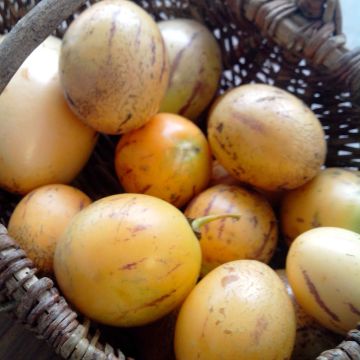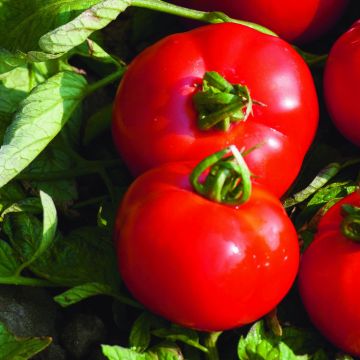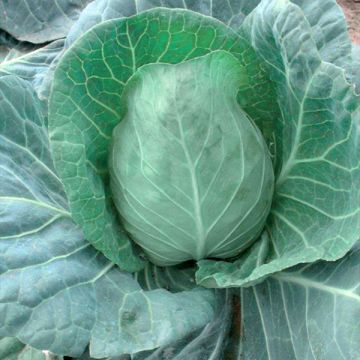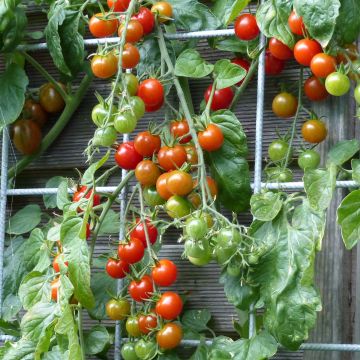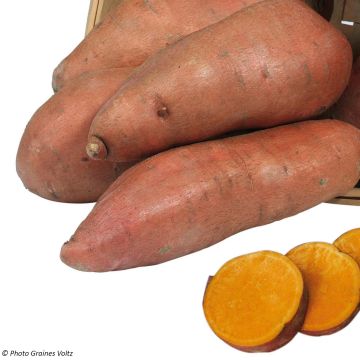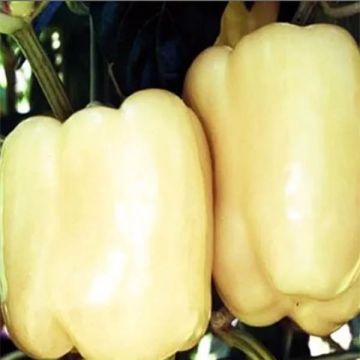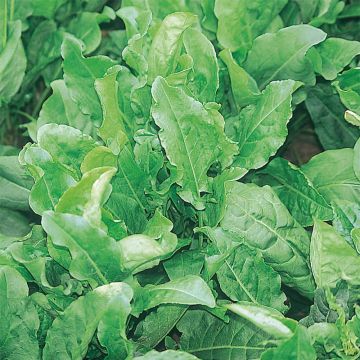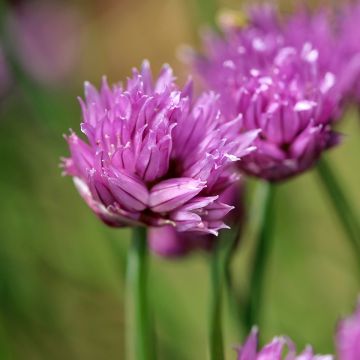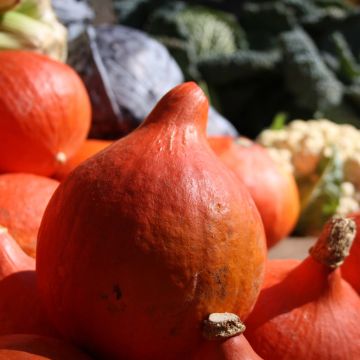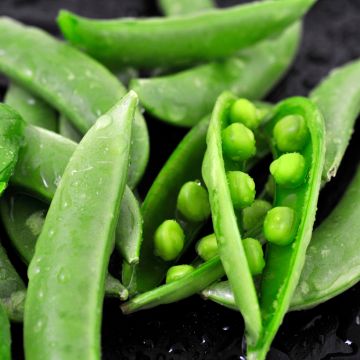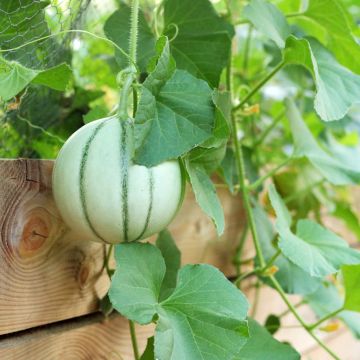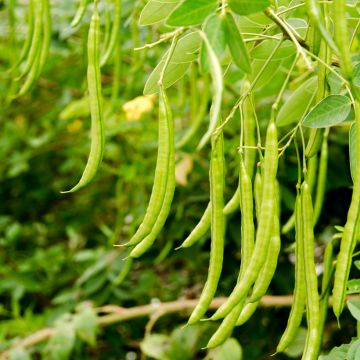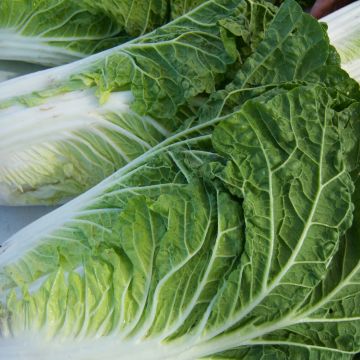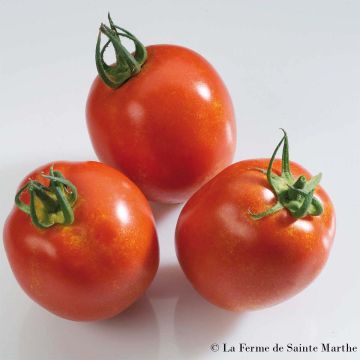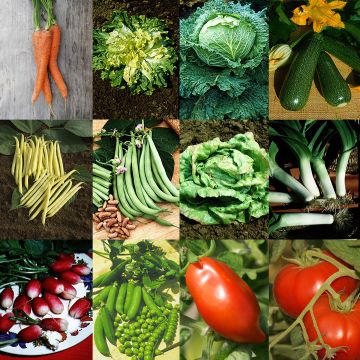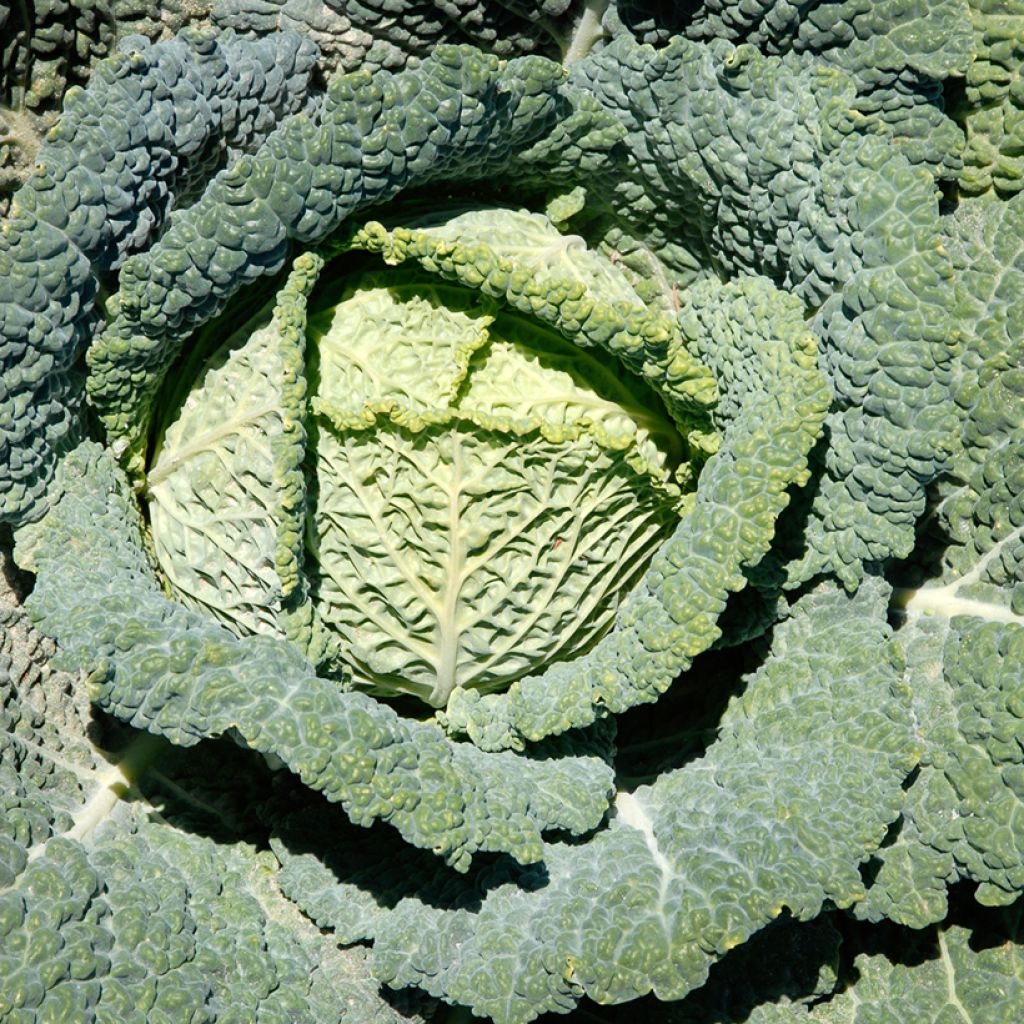

Cabbage Manon F1 plants - Brassica oleracea sabauda
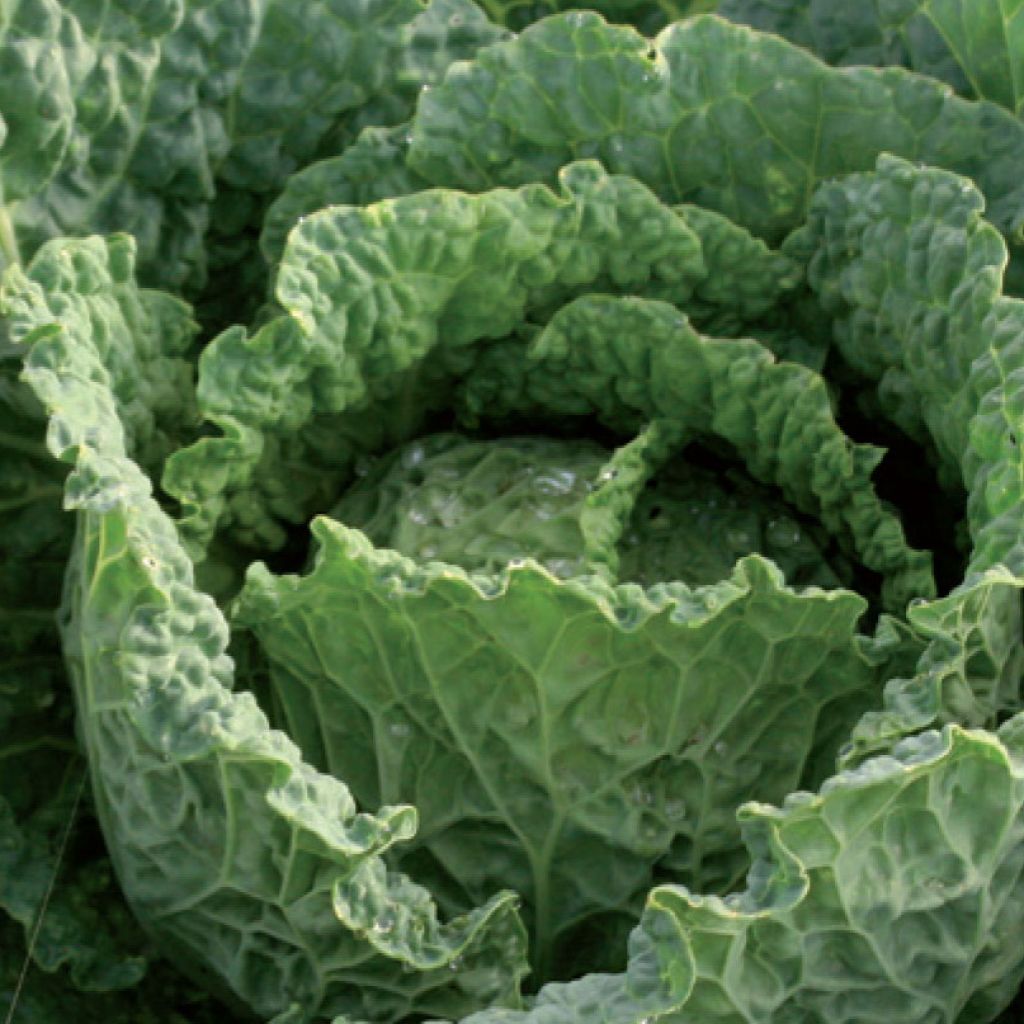

Cabbage Manon F1 plants - Brassica oleracea sabauda
Cabbage Manon F1 plants - Brassica oleracea sabauda
Brassica oleracea sabauda Manon F1
Cabbage, Savoy cabbage
This plant carries a 6 months recovery warranty
More information
We guarantee the quality of our plants for a full growing cycle, and will replace at our expense any plant that fails to recover under normal climatic and planting conditions.
From €5.90 for pickup delivery and €6.90 for home delivery
Express home delivery from €8.90.
From €5.90 for pickup delivery and €6.90 for home delivery
Express home delivery from €8.90.
Delivery to Corse prohibited: UE law prohibits the import of this plant from mainland France to Corse as part of the fight against Xylella fastidiosa. Please accept our sincere apologies.
More information
Description
The 'Manon' F1 Milan or Savoy Cabbage is a fast-growing hybrid variety, producing beautiful round heads with curly leaves of a bright green colour. This Cabbage with blistered leaves is delicious raw in salads but can also be cooked, braised with sausages or even with fish. The seedlings of the 'Manon' F1 Milan Cabbage can be planted from March to July for a harvest from June to October.
Originating, unsurprisingly, from Italy and more precisely from Milan, this Cabbage is quite similar to the Savoy Cabbage but differs by the blistered or curly appearance of its leaves. It belongs to the large family of Brassicaceae (formerly Cruciferae), like other vegetables: Cauliflower, Broccoli, Brussels Sprouts, Smooth-leafed Cabbage (or Dutch Cabbage), Green Cabbage, Kohlrabi, Chinese Cabbage.
The Milan Cabbage carries the Latin name of Brassica oleracea sabauda (in Latin, sabauda refers to Savoy). There are many varieties of Milan or Savoy Cabbage, with seasons extending from spring to winter. A vegetable of autumn and winter par excellence, Milan Cabbage withstands cold well. It is delicious raw in salads but can also be cooked, braised with sausages or even with fish. From a nutritional point of view, this leafy vegetable is remarkable: it is low in calories and very rich in vitamins C and B6. It also contains a lot of dietary fibre and minerals such as calcium.
In the garden, like almost all cabbages (except Brussels Sprouts), Milan Cabbage is a demanding vegetable. It requires excellent organic fertiliser and regular moisture.
Harvest: it is harvested when its head is well formed by simply cutting it off at ground level. This variety can be harvested from June to October.
Storage: Cabbages can be stored for a fairly long time in the field and can be kept for several days in the refrigerator. They also freeze very well after being blanched for 3 to 5 minutes in salted boiling water.
Gardener's tip: The main enemy of cabbage is the Cabbage White Butterfly (Pieris brassicae), a pretty cream-white butterfly with small black spots that emerges in April-May to wreak havoc throughout the summer by devouring its leaves. Don't be caught off guard and opt for prevention by installing an insect-proof cover tightly on vegetable hoops. These covers are easy to put in place and reusable to protect, for example, your carrot and leek crops.
Report an error about the product description
Harvest
Plant habit
Foliage
Other Vegetable plants A to Z
Planting and care
Savoy Cabbage is grown in the sun. It is a greedy vegetable that requires well-rotted manure, rich in nitrogen and potash. It is advisable to make a generous addition of mature compost (about 3/4 kg per m2), raking it into the soil to a depth of 5 cm (2in), preferably in autumn, after loosening the soil as you would for any vegetable crop.
Planting: Vegetable plants of this variety are planted from March to July for a harvest from June to October.
First, let the plug plants grow by transplanting them into pots with a diameter of 8 to 13 cm (3 to 5in), filled with compost. Place them in a warm and bright place. Water regularly.
For planting in open ground, choose a sunny location (or partial shade if your summers are very hot). Space the plants 50 cm (20in) apart in all directions. Soak the root ball in water for a few moments before planting. Dig a hole, place the plant and cover with fine soil. Water thoroughly.
At the beginning of the growing season, it is advisable to hill up the soil around the base of the Cabbages, to allow for better anchoring in the soil and better root development.
Then, to reduce the need for watering, we recommend mulching the soil with thin successive layers of grass clippings, if possible mixed with dead leaves.
During the growing season, water moderately but regularly.
It is beneficial to associate Cabbage with many vegetables such as tomatoes or lettuce. However, avoid planting it next to other Brassicas as well as zucchini, fennel, lamb's lettuce, leeks and strawberries.
Beware of pests such as Cabbage White butterflies or flea beetles and consider installing an insect-proof net. Cabbage is generally quite susceptible to diseases such as Clubroot, so it is important to rotate crops in the plots.
Cultivation
Care
Intended location
-
, onOrder confirmed
Reply from on Promesse de fleurs
Vegetable seeds
Haven't found what you were looking for?
Hardiness is the lowest winter temperature a plant can endure without suffering serious damage or even dying. However, hardiness is affected by location (a sheltered area, such as a patio), protection (winter cover) and soil type (hardiness is improved by well-drained soil).

Photo Sharing Terms & Conditions
In order to encourage gardeners to interact and share their experiences, Promesse de fleurs offers various media enabling content to be uploaded onto its Site - in particular via the ‘Photo sharing’ module.
The User agrees to refrain from:
- Posting any content that is illegal, prejudicial, insulting, racist, inciteful to hatred, revisionist, contrary to public decency, that infringes on privacy or on the privacy rights of third parties, in particular the publicity rights of persons and goods, intellectual property rights, or the right to privacy.
- Submitting content on behalf of a third party;
- Impersonate the identity of a third party and/or publish any personal information about a third party;
In general, the User undertakes to refrain from any unethical behaviour.
All Content (in particular text, comments, files, images, photos, videos, creative works, etc.), which may be subject to property or intellectual property rights, image or other private rights, shall remain the property of the User, subject to the limited rights granted by the terms of the licence granted by Promesse de fleurs as stated below. Users are at liberty to publish or not to publish such Content on the Site, notably via the ‘Photo Sharing’ facility, and accept that this Content shall be made public and freely accessible, notably on the Internet.
Users further acknowledge, undertake to have ,and guarantee that they hold all necessary rights and permissions to publish such material on the Site, in particular with regard to the legislation in force pertaining to any privacy, property, intellectual property, image, or contractual rights, or rights of any other nature. By publishing such Content on the Site, Users acknowledge accepting full liability as publishers of the Content within the meaning of the law, and grant Promesse de fleurs, free of charge, an inclusive, worldwide licence for the said Content for the entire duration of its publication, including all reproduction, representation, up/downloading, displaying, performing, transmission, and storage rights.
Users also grant permission for their name to be linked to the Content and accept that this link may not always be made available.
By engaging in posting material, Users consent to their Content becoming automatically accessible on the Internet, in particular on other sites and/or blogs and/or web pages of the Promesse de fleurs site, including in particular social pages and the Promesse de fleurs catalogue.
Users may secure the removal of entrusted content free of charge by issuing a simple request via our contact form.
The flowering period indicated on our website applies to countries and regions located in USDA zone 8 (France, the United Kingdom, Ireland, the Netherlands, etc.)
It will vary according to where you live:
- In zones 9 to 10 (Italy, Spain, Greece, etc.), flowering will occur about 2 to 4 weeks earlier.
- In zones 6 to 7 (Germany, Poland, Slovenia, and lower mountainous regions), flowering will be delayed by 2 to 3 weeks.
- In zone 5 (Central Europe, Scandinavia), blooming will be delayed by 3 to 5 weeks.
In temperate climates, pruning of spring-flowering shrubs (forsythia, spireas, etc.) should be done just after flowering.
Pruning of summer-flowering shrubs (Indian Lilac, Perovskia, etc.) can be done in winter or spring.
In cold regions as well as with frost-sensitive plants, avoid pruning too early when severe frosts may still occur.
The planting period indicated on our website applies to countries and regions located in USDA zone 8 (France, United Kingdom, Ireland, Netherlands).
It will vary according to where you live:
- In Mediterranean zones (Marseille, Madrid, Milan, etc.), autumn and winter are the best planting periods.
- In continental zones (Strasbourg, Munich, Vienna, etc.), delay planting by 2 to 3 weeks in spring and bring it forward by 2 to 4 weeks in autumn.
- In mountainous regions (the Alps, Pyrenees, Carpathians, etc.), it is best to plant in late spring (May-June) or late summer (August-September).
The harvesting period indicated on our website applies to countries and regions in USDA zone 8 (France, England, Ireland, the Netherlands).
In colder areas (Scandinavia, Poland, Austria...) fruit and vegetable harvests are likely to be delayed by 3-4 weeks.
In warmer areas (Italy, Spain, Greece, etc.), harvesting will probably take place earlier, depending on weather conditions.
The sowing periods indicated on our website apply to countries and regions within USDA Zone 8 (France, UK, Ireland, Netherlands).
In colder areas (Scandinavia, Poland, Austria...), delay any outdoor sowing by 3-4 weeks, or sow under glass.
In warmer climes (Italy, Spain, Greece, etc.), bring outdoor sowing forward by a few weeks.


































